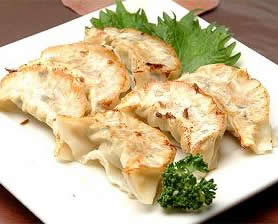
Mandoo is a Korean dumpling consisting of minced meat
and vegetables wrapped in a thin piece of dough. Popular meat fillings
include shrimp, ground beef, pork or fish. And popular vegetables
ingredients can include bean sprouts, green onions, shredded kimchi and
much more.
Korean mandoo can be cooked in several ways where
it is simmered in beef stock, steamed or fried. It is usually dipped
in soy sauce mixed with vinegar and served with
kimchi on the side. Crushed or powder red chili pepper flakes (
gochugaru)
can be added to the mixture of sauces to add an extra kick.
Traditionally, mandoo dumplings were made at home but nowadays, it is
readily available in Asian supermarkets and/or convenience stores in
the frozen foods section.
Mandoo is usually enjoyed as an appetizer or as a
snack but almost all Korean families prepares this dish on the first
day of any New Year by simmering mandoo's in a beef stock to make
mandoo guk.
Fact: In Chinese, dumplings are called jiaozi and in Japanese, it's gyoza.

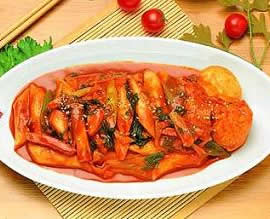
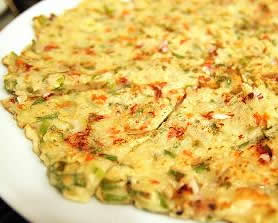
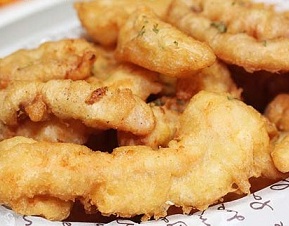
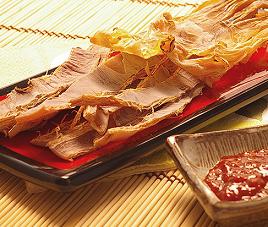

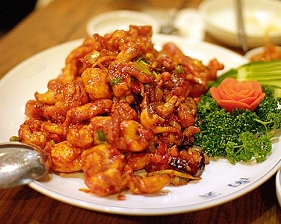 Kangpoong saewoo is another popular appetizer enjoyed by Asians at Korean/Chinese restaurants much like
Kangpoong saewoo is another popular appetizer enjoyed by Asians at Korean/Chinese restaurants much like